
An Imprint of Simon & Schuster, Inc.
1230 Avenue of the Americas
New York, NY 10020
www.SimonandSchuster.com
The author of this book is not a physician, and the ideas, procedures, and suggestions in this book are intended to supplement, not replace, the medical and legal advice of trained professionals. All matters regarding your health require medical supervision. Consult your health care practitioner before adopting the medical suggestions in this book, as well as about any condition that may require diagnosis or medical attention.
The author and publisher disclaim any liability arising directly or indirectly from use of this book.
Copyright 1993 by Rosemary Gladstar
All rights reserved, including the right to reproduce this book or portions thereof in any form whatsoever. For information, address Atria Books Subsidiary Rights Department, 1230 Avenue of the Americas, New York, NY 10020.
This Atria Paperback edition January 2020
Previously published in 1993 by Fireside, an imprint of Simon & Schuster, Inc.
 and colophon are trademarks of Simon & Schuster, Inc.
and colophon are trademarks of Simon & Schuster, Inc.
For information about special discounts for bulk purchases, please contact Simon & Schuster Special Sales at 1-866-506-1949 or .
The Simon & Schuster Speakers Bureau can bring authors to your live event. For more information or to book an event, contact the Simon & Schuster Speakers Bureau at 1-866-248-3049 or visit our website at www.simonspeakers.com.
Interior design by Bonni Leon
Artwork by Anna Vojtech
The Library of Congress Cataloging-in-Publication data has been applied for.
ISBN 978-0-671-76767-9
ISBN 978-1-5011-7555-8 (ebook)
This book is lovingly dedicated to four wise elders who brought me the magical gifts of wisdom and laughter:
Jasmine Karr, my mother, whose joy and laughter always helped me live in the lightness of being
Juliette de Bairacli Levy, my mentor and friend, who taught me the wisdom of the simplers
Tasha Tudor, my inspiration for magic and delight in all life and Adele Dawson, my neighbor and marvelous friend, who passed on to the other side as this book was written
And to three open-hearted young women whom Ive been blessed to know and who have allowed me to share the wisdom that was passed on to me: Jennifer Slick, Melanie Slick, and Celeste Pinney
Acknowledgments
Many people contribute to the birth of a book. To these people I offer special thanks and appreciation:
My husband, Karl Slick, without whose encouragement and help this book would forever have remained a dream in sleep. As well as inspiring me deep in my soul, he helped me through endless hours of computer frustration.
My fellow herbalists and dear friends, Jane Bothwell and Cascade Anderson Geller, who, amidst babies, families, and herbal work found time to proofread Herbal Healing for Women and who helped tremendously with their support and feedback to make this a better book.
Wabun Wind for making it possible. And Sheila Curry for her support and fine editing advice.
And the women of Sonoma County, whose faith and trust in me in my early days as the river herbalist helped me to flower into the herbalist I am today. I am forever thankful for the friendships, support, and teachings from my Sonoma County family.
Part One
HERBALISM

St. johns wort
ONE
An Introduction to Herbalism
If it is the greatest and highest that you seek, the plant can direct you. Strive to become through your will what, without will, it is.
Goethe
Honoring the Wisdom of our Ancestors
In every culture throughout the world you will find a great body of folklore concerning the indigenous plants of that region and the wise women who used them. For thousands of years women collected plants from meadows and woodlands and used them to create healing medicines. They gathered herbs by the waning and waxing of the moon, artfully created preparations, and developed herbal formulas. Through an intuitive communication with the plants, women learned the healing powers of these green allies. Their wisdom developed over countless years as remedies were tried, proven, and passed on. The best of these remedies were added to the lore, and the wisdom was transferred from mother to daughter, from wise woman to apprentice for countless generations. This is the legacy we have inherited. Healers, wise women, simplersthese women were the center and source of medicine and healing for their communities. They understood the cycles of the seasons, the ebb and flow of the universe, the sun, the moon, the stars, and the natural rhythms of their bodies.
Herbalism, rooted in the earth and honored as a womans healing art, survived the natural catastrophes of time. It wasnt until the fourteenth century, when a wave of witch-hunts began in Europe, that herbalism encountered its first great obstacle. The quiet influence of the wise womentheir inner power and their healing skillsbegan to be feared by the largely patriarchal Roman Catholic Church, and for the next three hundred years women were burned at the stake and tortured to death simply for being healers. Just being a woman during these times was dangerous; using herbs was a sure invitation to be persecuted. Thousands of women were killed in Europe during the height of the witch-hunts.
In spite of recurrent waves of repression, herbalism flourished right up until the dawning of the twentieth century, when it encountered its second great challenge. With the onslaught of the Industrial Revolution and the introduction of technology, a new tradition of medicine emerged, and herbalisms popularity began to wane. Through the influence of Newton and Descartes, Western culture entered a period wherein people believed they could understand and control nature by dissecting and quantifying it. The science of medicine was going to replace the art of healing. In the space of a century, allopathic or modern, Western technological medicine established itself as the number-one medical system in the Western world. Though it offered a remarkable technological and heroic, or emergency-oriented, medicine, its monopoly on health care posed a serious problem: no one system of medicine could answer the needs of all people or every health situation. As a result, in spite of the technology and resources offered by allopathic medicine, we gradually became less healthy andnot unrelatedlymore disconnected from our feminine sources of healing.
For almost a century, the practice of herbalism, viewed as antiquated and outdated by the scientific community, became illegal in the United States. Women forgot the art of gathering plants and making their own medicines. Saddest of all, women lost both the knowledge and the initiative to heal themselves. We became totally dependent on doctors and doctors orders. No longer in touch with our own healing power, we came to rely on external sources for answers to our deeply personal health problems. A particularly insidious aspect of this situation was the way we began to downgrade and disregard our own intuitive powers. My grandmother used to tell me tools not used are tools abusedall too often, they also became tools we lose. Out of neglect, we began to forget the inherent gifts of the Wise Woman, a tradition of healing that relies on the remarkable feminine powers of intuition, ancient wisdom, and herbal knowledge.


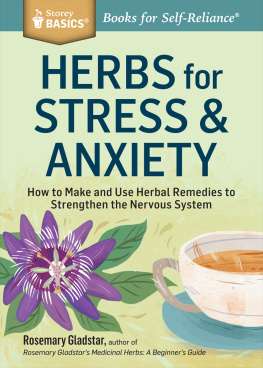
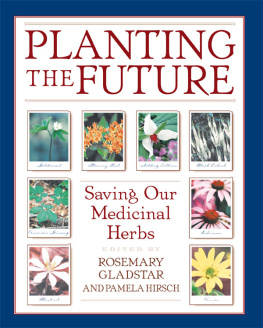
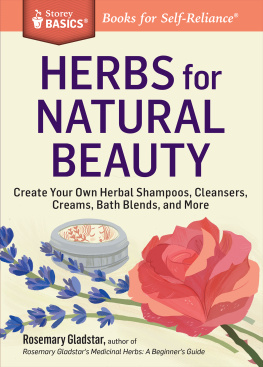
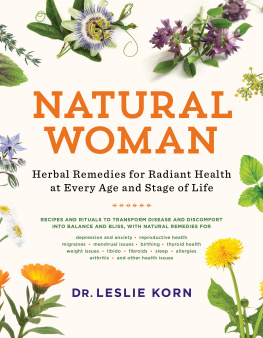
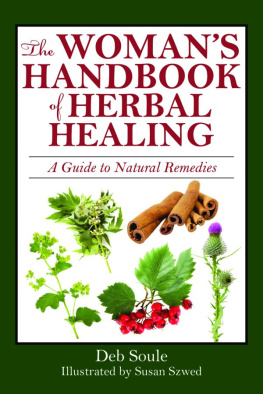
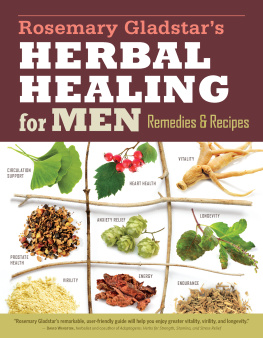

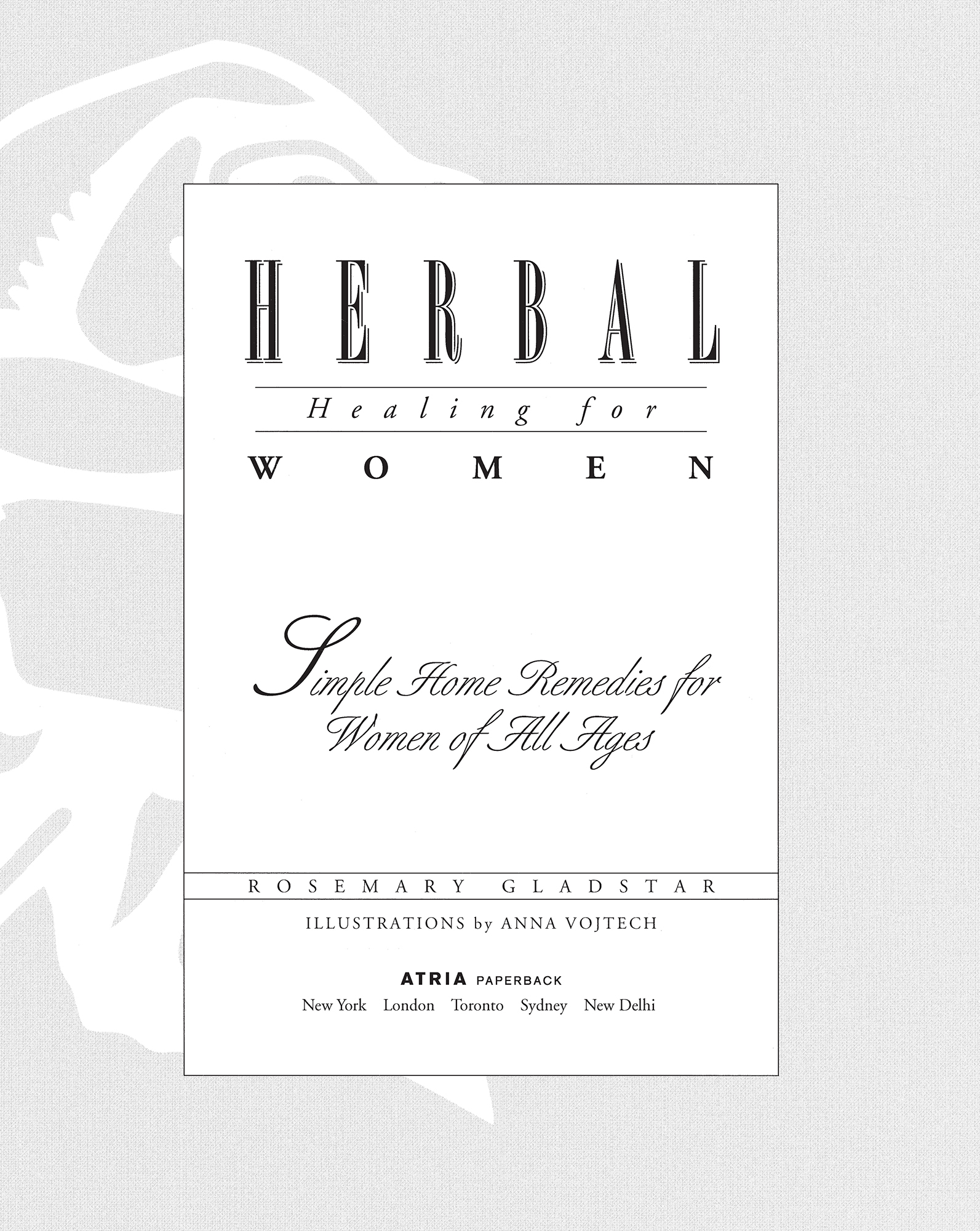

 and colophon are trademarks of Simon & Schuster, Inc.
and colophon are trademarks of Simon & Schuster, Inc.